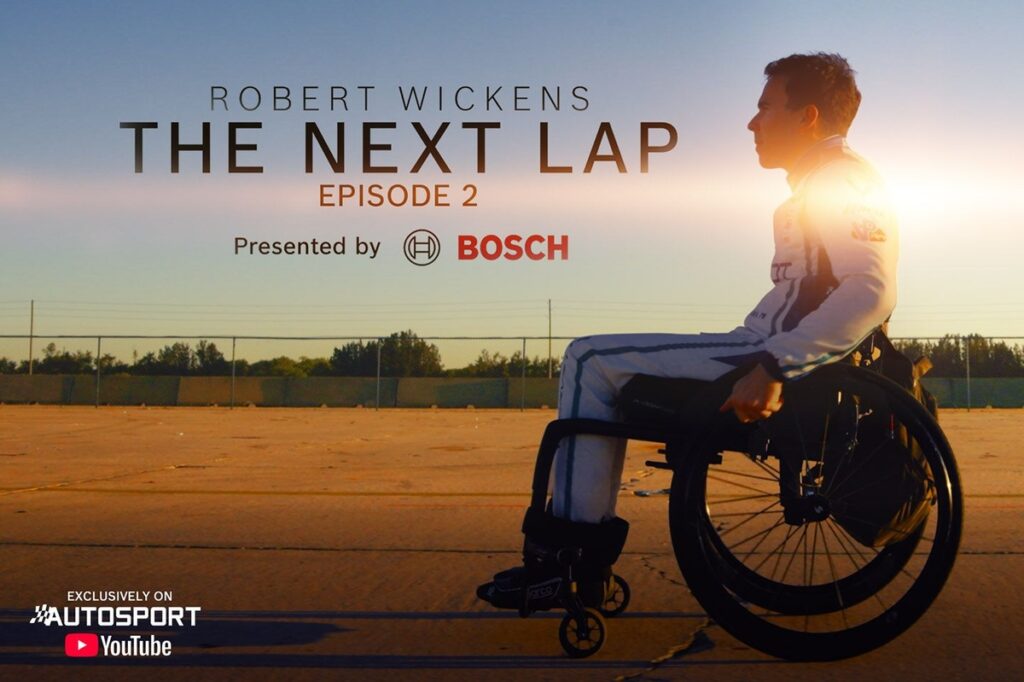Robert Wickens went into his first race of the season in the IMSA WeatherTech SportsCar Championship at Long Beach with a simple goal: “To leave with our heads held high.” The Canadian undoubtedly did that over the course of his maiden event aboard a Chevrolet Corvette Z06 GT3.R specially adapted to allow him to drive with hand controls. But there was also a feeling of what might have been for Wickens and team-mate Tommy Milner.
The positives included the 2nd generation electronic brake system developed by Bosch Motorsport proving “flawless from start to finish” during the 100-minute race. It allowed him to show his pace competing at this level of motorsports for the first time since returning into professional racing after his life-changing accident in IndyCar back in 2018.
Wickens ended up fastest in second free practice as he threaded his GT Daytona class DXDT Racing Chevy between the walls on the daunting 1.97-mile Long Beach Grand Prix Circuit. He then ended up just over half a second from pole position in qualifying despite a side-swipe from another car on his hot lap — he completed his lap with damaged suspension.
“It was all sunshine and rainbows going into qualifying,” says Wickens, a driver who has always felt an affinity with street circuits. “We thought if we do everything right and play our cards right, we have a shot at pole on debut. Frankly, if you had told me that last week, I would have said you are dreaming.
“But we ended up eighth. The electronic hand control system from Bosch was doing everything I needed it to do. That’s why it hurts that we didn’t get to maximise my qualifying.”
Wickens regards the system developed by Bosch for the Corvette as a breakthrough that has allowed him to take the next step of his racing comeback with a programme in the five IMSA sprint races aboard the Corvette. It is, says Jordan Smart, motorsport application engineer at Bosch Motorsport, “deeply integrated with the car”.
The brakes on the Hyundai TCR car in which Wickens returned to competition in IMSA’s Michelin Pilot Challenge support series were based on hydraulic braking. Now, the Bosch Electronic Brake System (EBS), explains Smart, allows the inputs Wickens makes on the controls on the steering wheel to create “a little electrical signal that is converted into brake pressure” at the wheel. “It’s true brake-by-wire.”
Wickens and Milner went into the Long Beach race on 12 April with ambitions to improve on eighth place on the grid, though with one proviso. Driver changes are an integral part of the IMSA series and DXDT knew that come the race it would lose time to its rivals in the pits.
“It just takes a little more time currently with the position we are in with Robert having to be lifted out of the car,” says Bryan Sellers, DXDT’s programme manager on the IMSA team. “We have a lot of moving pieces with getting Robert out, with getting the next driver in.”
That loss of time resulted in Milner falling to P10 from the seventh position out of which Wickens ducked into the pits. The longtime factory Corvette driver made it as high as fifth, but as he passed a BMW for that position he receives a tap on the rear that dislodges the bodywork.
Race control demands Milner pits to have the errant bodywork properly secured, the delay resulting in a 15th- place finish in class for the DXDT Chevy.
“Safety is the top priority and after having some contact our rear bumper was a little bit loose, and they gave us a black flag to pit for repairs,” explains Wickens. “Our race was more or less over at that point, so we finished whatever it was. I don’t think it tells the whole story.”
“That’s racing,” says Smart. “The system we have developed gave Robert the potential and the pace was there. That was the key takeaway for us: we provided him the tool to get to that level.”
In this article
Be the first to know and subscribe for real-time news email updates on these topics
Subscribe to news alerts
Read the full article here

